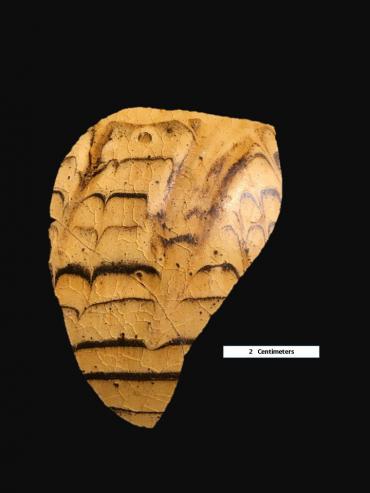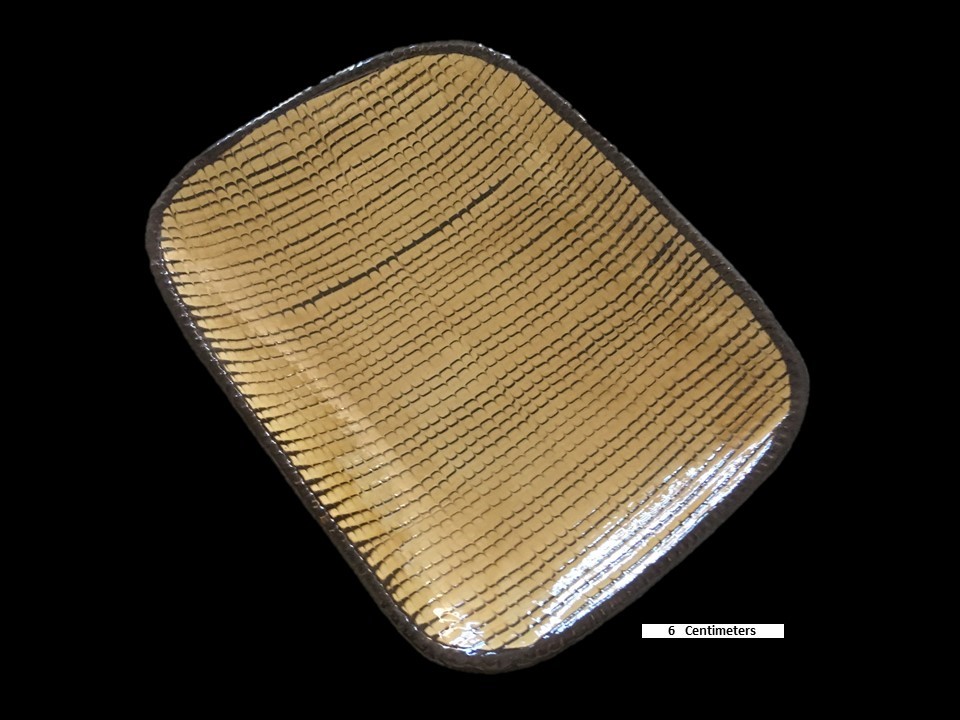The term slipware comes from a type of coloring used in the decoration of ceramic. It originated in Staffordshire, England, during the mid-17th century as elaborately decorated ornamental dishes. Staffordshire-type slipware is an earthenware, which means it usually has fine sand or other course materials within the body of the ceramic.

The slip is a slurry of clay, water or other liquids, and decorative coloring additives that differ from the glaze color. The style often uses both a white and dark slip in a variety of ways to create a simple or complex pattern with contrasting colors. In most cases, the lighter slip would be placed first, and then the darker slips would be placed by using tubes to create simple patterns like stripes. The decorations would vary depending on the intended use of the vessel, as would the quality of the vessel itself.
There eventually was a shift toward a more utilitarian use with course-bodied vessels like jugs, dishes, bowls, and mugs that were intended for everyday use in taverns and in poor to middle-class households. Staffordshire slipware was widely exported to America through the late 18th century. Elaborately decorated styles, such as marbling, can be found on American archaeological sites today.
For more information about artifacts and current excavations around Fairfax County, see https://cartarchaeology.wordpress.com/


